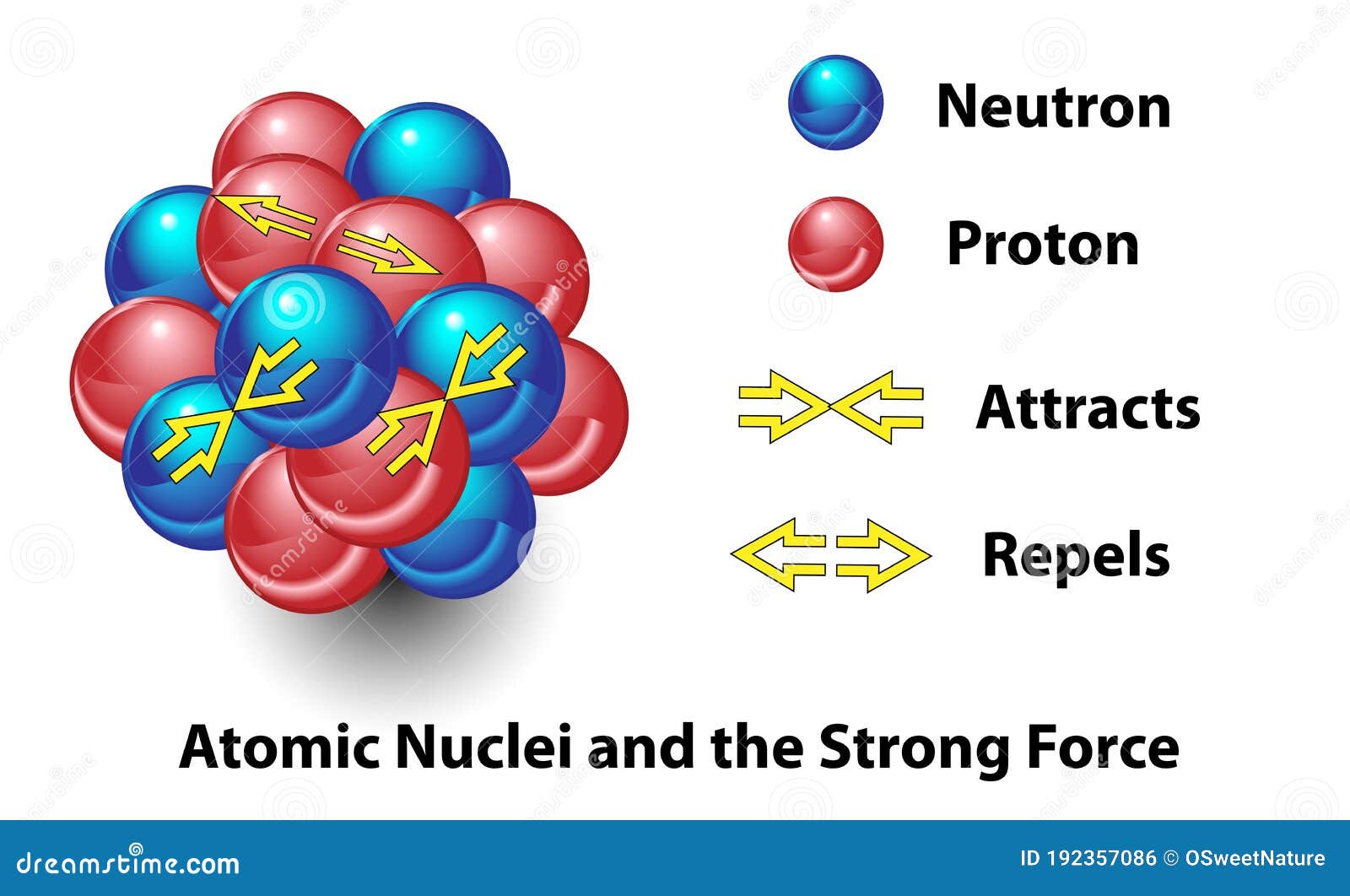The strong force, or strong nuclear force, is a fundamental interaction that governs the behavior of subatomic particles within an atom’s nucleus. It is this force that binds protons and neutrons together, overcoming the repulsive electromagnetic force that tends to push positively charged protons apart. Understanding the strong force is paramount not only for comprehending atomic structure but also for delving into the fundamental aspects of matter itself.
The phenomenon of the strong force can be elucidated through quantum chromodynamics (QCD), which is the theoretical framework that describes how quarks and gluons interact. Quarks, the fundamental constituents of protons and neutrons, are bound together by gluons—force-carrying particles that mediate the strong force. This intense interaction not only secures the integrity of protons and neutrons but also contributes to the overwhelming majority of an atom’s mass, as the binding energy associated with the strong force is converted into mass via Einstein’s mass-energy equivalence principle, E=mc².
In the nucleus, protons and neutrons are tightly packed in close proximity, resulting in a finely balanced system. Without the strong force, the nucleus would disintegrate due to the repulsive forces between like-charged protons. The strength of the strong force, however, diminishes rapidly with distance, a property that plays a pivotal role in the stability of atomic nuclei. The range of the strong force is limited to a few femtometers (10-15 meters), which is roughly the size of a nucleus, leading to the conclusion that the nuclear landscape is a delicate balance of forces.
Interestingly, the strong nuclear force exhibits a property known as confinement. Quarks cannot exist in isolation; they are perpetually bound together to form hadrons, such as protons and neutrons. This confinement stems from the energy dynamics within the strong force, where an increase in distance between quarks generates more energy, effectively preventing their separation. This behavior is counterintuitive and stands in contrast to other fundamental forces, exemplifying a unique characteristic of the strong force, namely its non-linear nature.
Another fascinating aspect of the strong force is its potential to catalyze intriguing astrophysical phenomena. For instance, the strong force underlies the processes that power stars. During nuclear fusion, protons overcome their electrostatic repulsion at extremely high temperatures and pressures, allowing the strong force to take effect. This process is responsible for the energy production in stars, making it a cornerstone of the universe’s structure and longevity.
Furthermore, the interplay of the strong force is significant in the concept of nuclear stability. Not all nuclei are stable; some can undergo radioactive decay—a process often facilitated by the imbalance of forces within the nucleus. When the strong force fails to adequately counteract repulsive forces, heavy nuclei may release energy in the form of alpha or beta radiation. This realization has profound implications, from understanding the life cycles of stars to the mechanisms behind nuclear power and even the fundamental processes influencing the evolution of the cosmos.
The strong force also has implications beyond the scope of traditional atomic theory. It has transformed research into various realms of particle physics, particularly through experiments conducted in particle accelerators. These devices propound high-energy collisions, generating conditions analogous to those shortly after the Big Bang. By observing the outcomes of such collisions, physicists glean insights into quark-gluon plasma, a state of matter theorized to exist at extremely high temperatures and densities, providing a glimpse into the early universe.
The quest to further understand the strong force has cemented its position at the vanguard of theoretical and experimental physics. The ongoing endeavors to unravel its mysteries are fueled by intricate models and sophisticated computational simulations. These scientific pursuits aim to describe the nature of confinement, the structure of hadrons, and the behaviors of matter under extreme conditions, traversing the boundaries of knowledge in contemporary physics.
Despite its formidable strength, the strong force is often overshadowed by other fundamental forces, such as gravity and electromagnetism. However, the reliance of the fabric of matter on this invisible force cannot be overstated. The strong force is not merely a component of atomic theory; it signifies the underlying principles that govern the assembly and interaction of all matter in the universe.
In summary, the strong force remains a central pillar in our understanding of atomic and subatomic phenomena. Its intricate web of interactions, properties, and implications extends well beyond the confines of atomic nuclei, impacting myriad aspects of the universe. The strong force is not only critical for defining the architecture of matter but also plays an integral role in the dynamic processes that shape cosmic evolution. As research continues to probe its depths, we inch closer to unlocking the fundamental secrets of existence itself.












